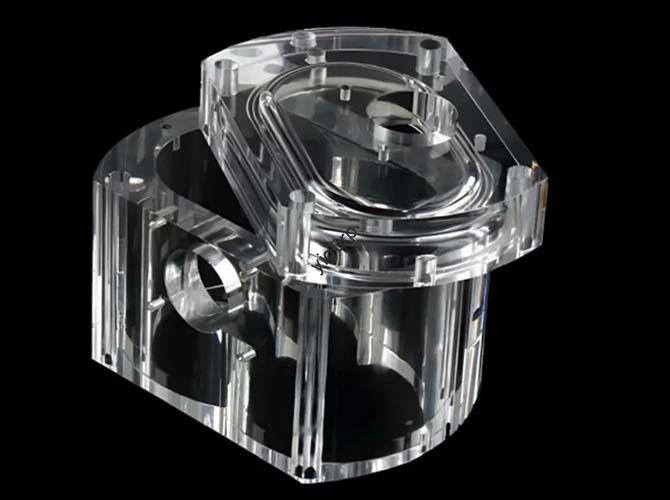If you’re a manufacturer, Designer, or entrepreneur considering adopting new production technologies, Sie haben wahrscheinlich gehört 3D Druck. But is it worth the investment? This guide breaks down the key pros and cons of 3D printing—backed by real data and use cases—to help you make an informed decision.
1. Core Overview: What Makes 3D Printing Unique?
Before diving into pros and cons, let’s clarify: 3D Druck (or additive manufacturing) builds objects layer by layer from digital CAD models, unlike traditional “subtractive” methods (Z.B., CNC -Bearbeitung) that remove material from a solid block. This fundamental difference drives its biggest advantages—and challenges.
2. The Pros of 3D Printing: How It Solves Business Pain Points
3D printing’s strengths make it a game-changer for specific use cases. Nachfolgend finden Sie seine Top -Vorteile, with actionable examples:
| Vorteilskategorie | Schlüsselvorteil | Beispiel für reale Welt |
| Designflexibilität | Achieves complex geometries (Z.B., Gitterstrukturen, interne Kanäle) impossible with traditional methods. | A medical device company used 3D printing to create a heart stent with tiny, custom flow channels—improving patient recovery by 30%. |
| Schnelles Prototyping | Turns CAD designs into physical prototypes in hours (vs. weeks for molds), speeding up product development. | A startup reduced its new smartphone case design cycle from 8 Wochen zu 5 days using 3D printing. |
| Materialeffizienz | Reduces waste by 40-60% (only uses material needed for the part, not excess for cutting). | An aerospace firm cut aluminum waste from 70% (CNC -Bearbeitung) Zu 15% (3D Druck) Für Motorkomponenten. |
| Energie & Nachhaltigkeit | Consumes 30-50% less energy than traditional manufacturing, lowering carbon emissions. | A furniture brand’s 3D-printed chairs reduced production-related CO₂ by 45% compared to injection-molded versions. |
| Low-Volume Cost Savings | Eliminates expensive molds (Kalkulation \(10k-)100k+), Erschwingliche Produktion kleiner Batch machen. | A jewelry designer now produces custom necklaces in batches of 50 (vs. 500 minimum for molding) without raising prices. |
3. The Cons of 3D Printing: Einschränkungen zu berücksichtigen
Während mächtig, 3D printing isn’t a one-size-fits-all solution. Here are its key drawbacks—and who they impact most:
3.1 High Upfront & Operational Costs
- Industriedrucker: Kosten \(50k-)1M+ (vs. \(10k-)50k for basic CNC machines).
- Specialty materials: Metal powders or high-performance resins can cost \(50-\)500 pro Kilogramm (vs. \(2-\)10 for raw plastic pellets).
- Who it affects: Small businesses with tight budgets or those needing only basic production.
3.2 Material & Quality Limitations
- Limited materials: Most printers only work with plastics, Harze, or a few metals (Z.B., Titan, Stahl). Hochtemperaturplastik (for engines) or flexible rubbers are still rare.
- Accuracy gaps: Dimensionsgenauigkeit (± 0,1 mm) und Oberflächenrauheit (often requiring post-processing) may not meet engineering standards for critical parts (Z.B., car brakes).
- Case in point: A automotive supplier had to reject 3D-printed brake calipers because their surface roughness caused brake fluid leaks.
3.3 Geschwindigkeit & Scalability Issues
- Slow for mass production: A 3D printer takes 2-8 Stunden zu machen 1 plastic part; an injection molding machine makes 100+ pro Stunde.
- Who it affects: Brands needing 10k+ units monthly (Z.B., water bottle manufacturers).
3.4 Umwelt & Legal Risks
- Waste from failed prints: 15-20% of 3D prints fail (due to layer adhesion or design errors), creating non-recyclable waste (Z.B., some resins).
- Intellectual property (IP) theft: Digital 3D files are easy to copy, leading to counterfeit products.
- Beispiel: A toy company found 3D-printed knockoffs of its designs being sold online within 2 weeks of launch.
4. Pros vs. Nachteile: A Quick Decision Checklist
To simplify your choice, use this table to match 3D printing’s strengths/weaknesses to your needs:
| Your Business Need | 3D Printing Is a Good Fit? | Warum? |
| Small-Batch-Produktion (1-1,000 Einheiten) | ✅ Yes | Avoids mold costs; schnelle Turnaround. |
| Komplex, individuelle Designs | ✅ Yes | Enables geometries traditional methods can’t match. |
| Massenproduktion (10k+ units monthly) | ❌ No | Zu langsam; Injektionsformung ist billiger. |
| Kritische Teile (Z.B., Medizinische Implantate) | ⚠️ Maybe | Requires high-quality printers/materials; test rigorously first. |
| Tight budget (under $50k for equipment) | ❌ No | Upfront printer costs are too high. |
5. Perspektive der Yigu -Technologie zum 3D -Druck
Bei Yigu Technology, Wir sehen 3D Druck as a complementary tool—not a replacement for traditional manufacturing. Its strengths (Flexibilität, Nachhaltigkeit) solve client pain points like slow prototyping or custom parts, but we always address limitations upfront: we help clients choose printers/materials for their use case (Z.B., SLA for detailed prototypes, SLM for metal parts) and optimize designs to reduce waste. Zum Beispiel, we helped a medical client adjust their 3D-printed implant design to cut post-processing time by 30%. While challenges exist, 3D printing’s future (faster speeds, more materials) makes it a smart long-term investment for businesses prioritizing innovation.
FAQ: Your Top 3D Printing Questions Answered
- Q: Can 3D printing replace injection molding for my plastic products?
A: Only if you make small batches (unter 1,000 Einheiten). For 10k+ units, injection molding is 50-70% cheaper and 10x faster.
- Q: Are 3D-printed parts strong enough for industrial use?
A: It depends—metal 3D-printed parts (Z.B., SLM titanium) have 90-95% the strength of forged metal, but plastic parts may not handle heavy loads. Test with your specific material/design first.
- Q: How can I reduce 3D printing waste from failed prints?
A: Use simulation software to check designs before printing, choose high-quality materials, and train staff on printer calibration. Yigu Technology’s workflow tools cut client failure rates from 18% Zu 7%.
